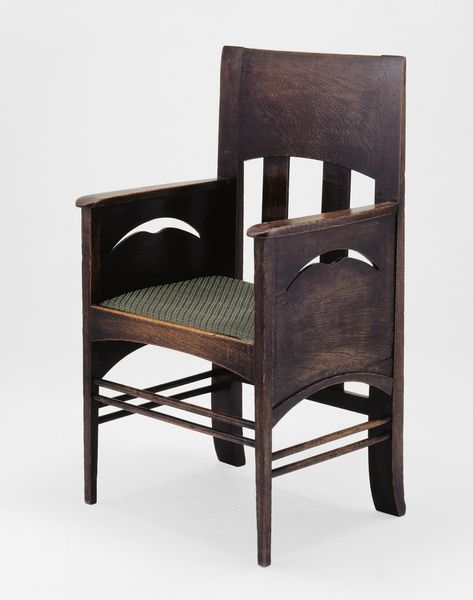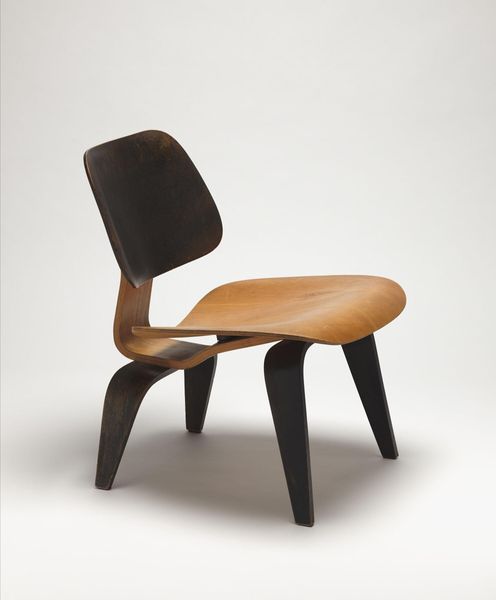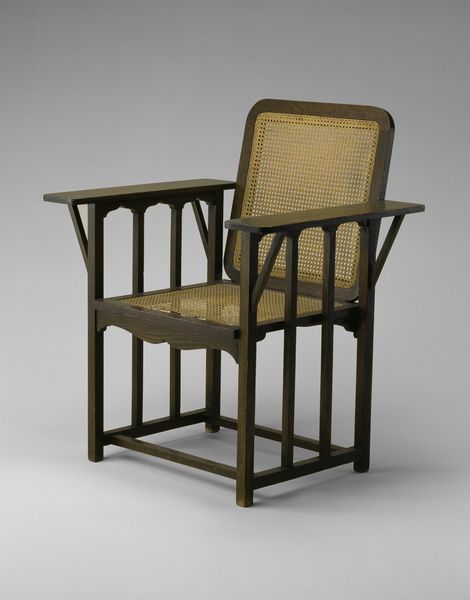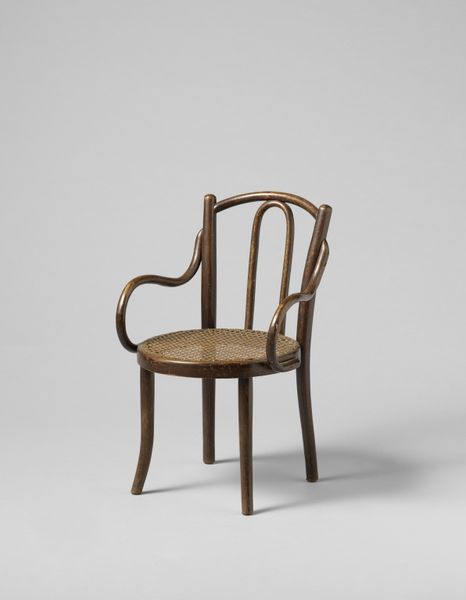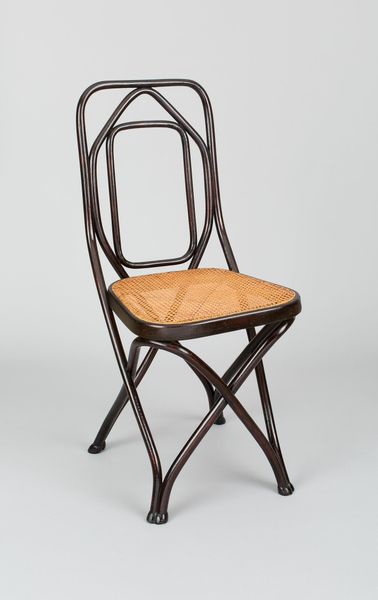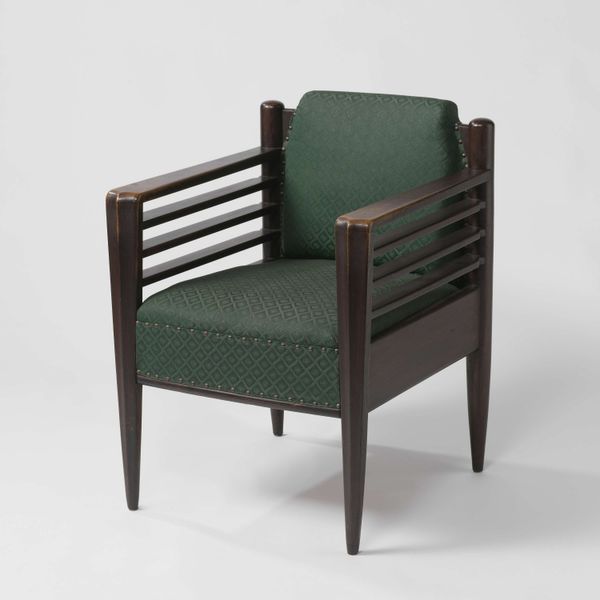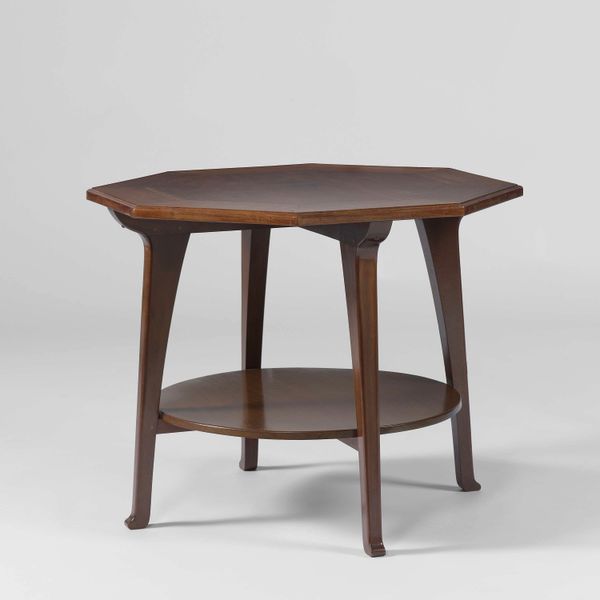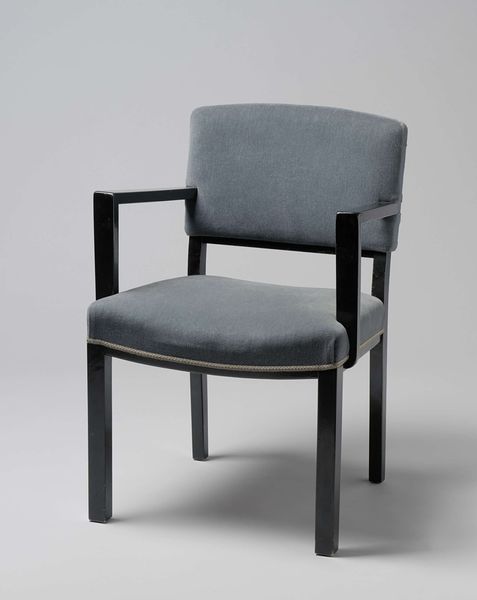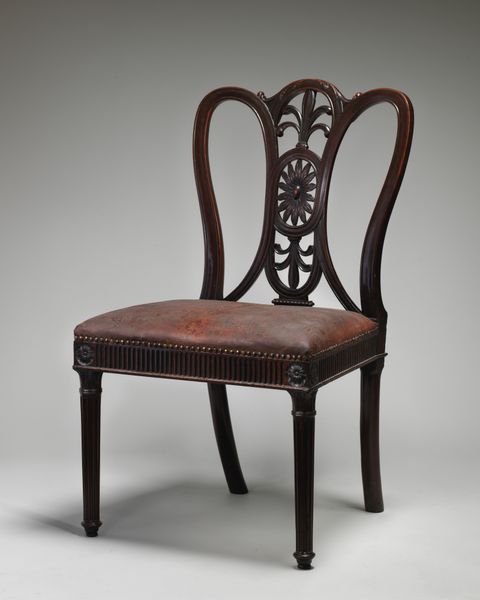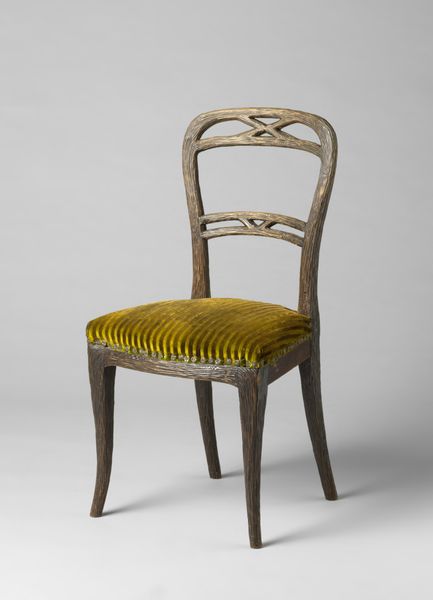
wood
#
arts-&-crafts-movement
#
furniture
#
wood
#
decorative-art
#
product render
Dimensions: 81 × 52 × 50 cm (31 7/8 × 20 1/2 × 19 5/8 in.)
Copyright: Public Domain
Curator: Here we have an armchair produced between 1904 and 1905 by J.S. Ford, Johnson and Company. It's a wonderful example of the Arts and Crafts movement, made of wood. Editor: It’s surprisingly elegant, given its obvious sturdiness. It gives the impression of a handcrafted solidity. There is something about the wood that makes me think about traditional craft and labour. Curator: Absolutely. The Arts and Crafts movement really emphasized the value of handmade goods and the craftsmanship inherent in production. We have to consider it emerged in response to the Industrial Revolution's mass-produced, often poorly made items. This piece embodies a return to quality materials and careful construction. The mortise-and-tenon joints and visible joinery are not hidden; they are celebrated as part of the design. Editor: The lines and curves evoke that pushback. The teardrop-shaped openings where the armrests connect seem very deliberate, suggesting that aesthetic considerations were just as important as function, not that those can be separated. Did women have a part in this type of craft? I am interested in seeing if there's space to dive into who made what, in which ways women are part of that world in furniture, beyond its function to the male user, or consumer. Curator: It’s definitely worth looking into. In the Arts and Crafts movement, we do know that some workshops explicitly aimed to empower women through craft, offering opportunities for economic independence. Considering how this armchair offered domestic support, that exploration of gender seems pertinent. This chair seems very "masculine," and maybe research would allow to break with it, nuance our readings of the furniture design, consumption, production. Editor: That is true, yes. The scale definitely adds to its solidity—the choice of a darker wood stain gives it an antique appeal too. The Arts and Crafts movement’s focus on simple living also relates to gendered labor, with its connections to domesticity and gender expectations that defined roles in society. Curator: Right. Its creation represents both an aesthetic choice and a conscious decision to champion specific labor practices. It prompts important questions about how art objects, like this chair, participate in broader cultural and economic narratives of their time, something that allows us to talk about gender, social class and the rise of consumerism. Editor: Well, it has given me a lot to consider about domesticity, materiality, gender and art production, when looking at this work. Curator: Indeed. Hopefully, listeners will gain some insight into how craft challenges industrial mass production.
Comments
No comments
Be the first to comment and join the conversation on the ultimate creative platform.
